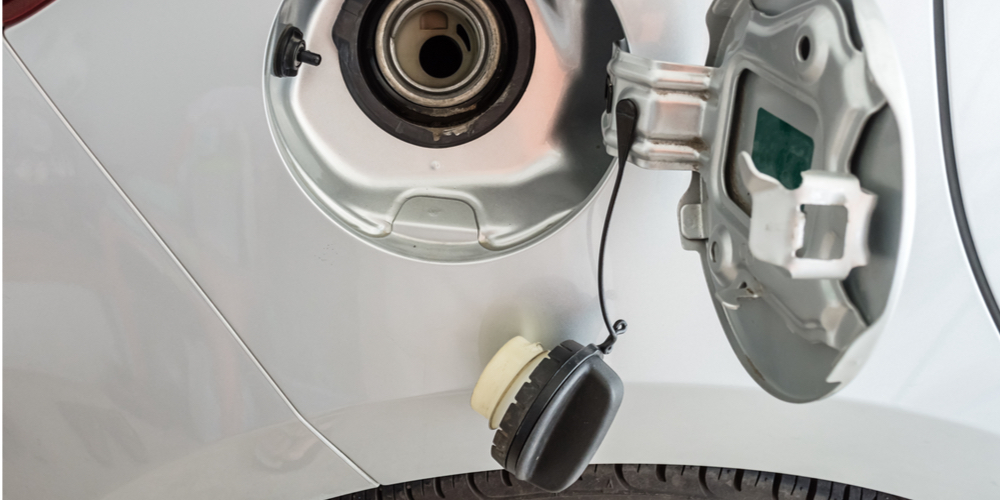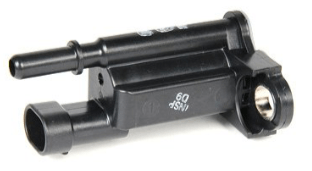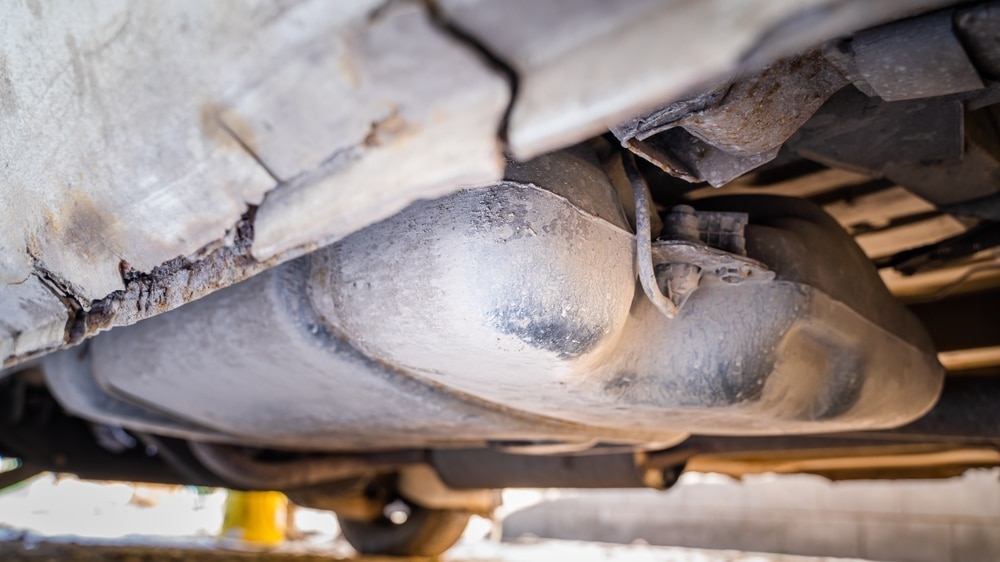
One of the most common trouble codes with the Hyundai Elantra is the P0456 code. This trouble code references a number that is given to you when you plug your Elantra into an OBDII scanner.
P0456 Indicates that there is a small leak in the evaporative emission control system. It often appears with or is related to other codes, such as P0420, P0441, and very often P0440.
P0456 is normally not an immediate threat to the driveability of your Elantra. Certainly, anytime the service engine soon light is on, it’s good to deal with it as soon as possible.

While the trouble code may state that there is a “small leak” in the EVAP system of your Hyundai Elantra, it is actually referring to the amount of pressure loss and not the physical size of the leak.
P0456 Quick Info
| Symptoms | Gas smell, MIL light |
| Common Causes | Broken EVAP hose, bad gas cap, purge valve |
| Breakdown Risk? | Not a breakdown risk, usually no drivability issues |
| Repair Difficulty | It can be difficult to diagnose |
| Repair Cost (Parts) | Usually, = less than $200 for the common causes |
Hyundai Elantra P0456 Definition: EVAP Leak (Small)
P0456 is a universal OBD II trouble code. This means that regardless of vehicle make or model, the code will mean the same thing (Elantra or not). The code technically stands for evaporative emission system small leak detected.
Evaporative Emissions System
The EVAP system captures all fuel vapor from the fuel tank and sends them to the engine’s intake to be ignited during the normal combustion process. Its primary function is emissions reduction.
Small Leak
A small EVAP leak should not change the way your engine runs nor be considered a breakdown risk.
When there is a small leak in the Hyundai Elantra’s EVAP system, it will throw the P0456 OBDII Code. If there is a large leak, it’ll throw P0455.
Hyundai Elantra P0456 OBDII Code Symptoms
P0456 code will typically not be accompanied by any noticeable symptoms other than the smell of gas and the service engine soon light.
- Gas Smell– You may smell fuel vapor around the fuel tank area or fuel filler tube.
- Check engine light– P0456 may be accompanied by other EVAP-related trouble codes. If there are, they may help you pinpoint where the leak is coming from.
The EVAP system deals directly with fuel vapor. If fuel vapor is leaking from the system, you may smell it faintly while driving your Elantra. But it won’t affect the way the engine itself runs.
Elantra P0456 Trouble Code Causes + Diagnosis

There are many things that can cause the P0456 trouble code to trigger in your Hyundai Elantra. If your Elantra has warned you at all in the last few months that the fuel cap was off when it wasn’t, then replacing it would be a great first step.
Here are the most common problems that will throw the code, presented in order (somewhat) from most to least likely:
Fuel Cap

Your Elantra’s fuel cap prevents fuel vapor from escaping the fuel tank. If the gas cap has failed, you’ll likely get a message informing you that the fuel cap is off even when it is on. If you are getting that message, plus a P0456, replace the fuel cape.
Evap System Hose
The EVAP hose that carries the fuel vapor from the fuel tank to the intake manifold can begin to leak. This will cause the P0456 code. Look for either a tear or a hole in it. This is one of the most common issues that cause this code.
Vapor Canister Purge Valve

One of the most common causes of the P0456 code is the vapor canister purge valve. It’s really easy to replace. There are a few clips that you need to find and remove. Your Elantra’s purge valve location and style will depend on the model year and engine equipped.
Fuel Tank Sending Unit
It is possible for the gasket that attaches the fuel-sending unit to the gas tank to go bad. This can reduce tank pressure and throw the code.
Fuel Filler Neck
There is often a gasket where the fuel filler neck connects with the gas tank. This gasket can dry out, especially with vehicles that spend their time in dry climates. When it dries out, the fuel tank can’t hold pressure anymore.
A leaking fuel tank can also cause P0456 in the Hyundai Elantra, but it’s not as common as a bad fuel filler neck or sending unit.
P0456 Diagnosis- Hyundai Elantra
A mechanic has a wide range of instruments at his disposal to diagnose what would be causing the P0456 in your Hyundai Elantra. Here are the most common things that are done to diagnose the code:
- A mechanic will typically check to see if there are any other trouble codes. The more trouble codes there are, the easier it can be to diagnose a problem. That’s because when they appear together in certain combinations, there will often only be a few conditions that throw any combination of codes at once.
- After ascertaining what trouble codes appear with the P0456, the mechanic will typically inspect the EVAP system. This includes the purge valve, line, and canister.
- The mechanic will inspect the gas cap to make sure that it can handle pressure. If you are getting a warning that your gas cap is off, even when it’s on, replacing it will more than likely clear this code.
- The fuel tank and charcoal canister vent pressure will be checked and monitored.
- After the checks and fixes listed above, the mechanic will perform two tests: A smoke test (using a smoke machine), and they’ll use a scan tool to confirm that the EVAP system is functioning properly.
Most Common P0456 Fixes

Here are the most common Elantra P0456 fixes:
- Gas cap replacement
- EVAP line replacement
- Replace charcoal canister
- Purge solenoid
Of all the items listed above, it would be wise to start with the gas cap and work your way to the fuel tank since the gas cap is far and away the easiest and least expensive item to replace.
Here’s a great video on how to test your gas cap.
Good luck figuring out what is causing your Hyundai Elantra to throw the P0456 code. We hope this helps. If there is anything that you feel you could add, please feel free to leave a comment below.
Is P0456 a Serious Concern?
While P0456 is not going to cause your Elantra’s engine to stop running, it should not be treated lightly. You could have a fuel leak. Pay extra attention to your tank level and make sure you are not leaking fuel. We recommend taking it in and/or dealing with it right away.
